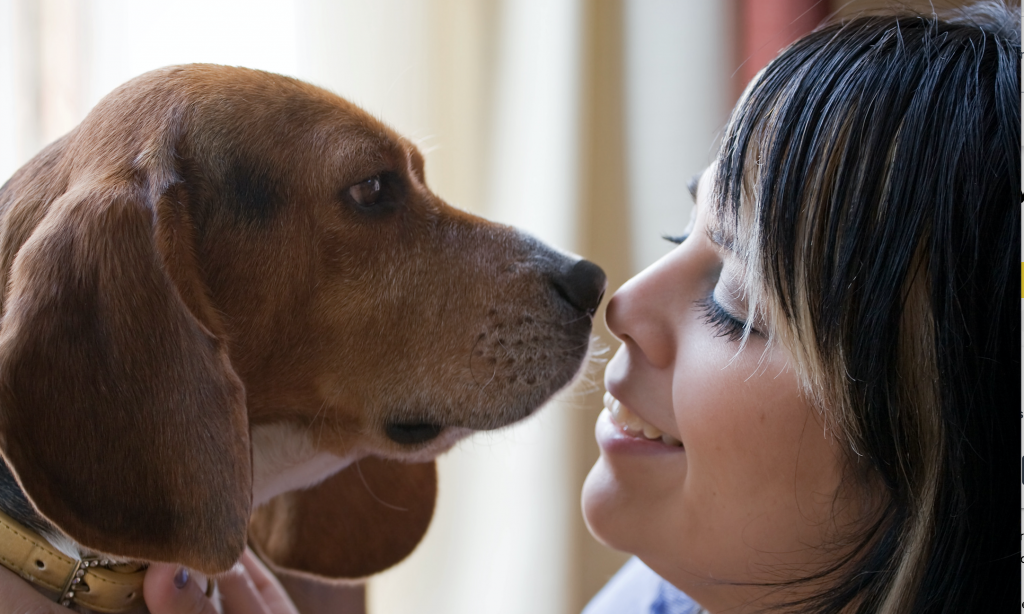
AI might enable researchers to communicate with pets and other animals. (Source: Storyblocks stock photo)
Can AI Translate Woofs Into Words?
Well of all the uses of AI that we have reported on this one was quite a surprise. How about using AI to converse with your pets? It could happen according to a news story from engadget.com.
The author J. Trew gives a detailed report on several species of animals that scientists have long been studying and are starting to show positive returns on their work using AI.
Trew says the Regent Honey Eaters, a bird species, are a good example of why AI might be useful in saving that species from going extinct.
It seems they are forgetting how to talk. The songbird’s habitat has been so severely devastated that its numbers are dwindling. Worse, the ones that remain are so scattered that the adult males are too far apart to teach the young how to sing for a mate — how to speak their own language. The gradual loss of the Honeyeaters’ song, their primary tool for wooing a partner, creates a vicious circle of spiraling decline.
Humans, however, are a loquacious lot. Scientists estimate that there are 7,000 languages in use. In the U.S., roughly 25 percent of people claim they can converse in a second language. In Europe, it’s around 60 percent. In Asia or Africa, bilingualism is even more common as local tongues and regional dialects live alongside (often multiple) “official” languages. But not one person on this planet can speak Cat or Dog — much less Regent Honeyeater.
Could enough recorded sounds of any animal be fed to AI for compiling and eventually understanding? Yes.
“If you had to pick one component of humans … that no other animal comes anywhere near being able to do anywhere near as well: Communication is the thing.” James Savage, a behavioral ecologist at both the University of Chester and Anglia Ruskin University told Engadget. In short, talking is what separates humans from the beast, so expecting animals to hold a conversation is somewhat oxymoronic.
Animals can understand us, however, as demonstrated by primates being able to communicate with sign language and dogs following voice and hand commands.
Praire Dog Talks
The article breaks down some success in prairie dog experiments that have been going on for years.
You can’t blame scientists for thinking that AI might be the way to find the human/animal breakthrough though. A long study into the calls of prairie dogs suggests that they can demonstrate something that resembles vocabulary. In one experiment, scientists approached the rodents at different times wearing different colored shirts and were able to determine discrete alarm calls for each one. The prairie dogs were basically saying “The woman in the blue shirt is back” or “this time it’s the yellow-shirted person.” Con Slobodchikoff, the lead researcher in this experiment and many more on prairie dogs, told The Atlantic as far back as 2013 that, in his opinion, his subjects had “the most sophisticated animal language that has been decoded.”
While this seemingly opens up the possibility of “vocabulary” in animal language, there’s also likely an evolutionary limit. An animal might be able to indicate something with a sound or “word,” but only if it has a need to do so. Prairie dogs likely don’t bother to express things like how they feel or what their goals are in life.
“The reason, as an animal, you communicate information to another animal, is if there’s some benefit to you doing so,” Savage said.
But what if there was an animal with few natural predators and high cognitive abilities. Say, a dolphin? According to Savage, there are hints they might have something more to talk about
“I don’t think it’s too anthropomorphic to say that in the dolphin case, they have a particular little thing they do, which is their name, because they use it and other dolphins use it to refer to them.” Dolphins, it appears, give themselves names and respond to its use by others.
The article is filled with links to several experiments on various animals. It is fascinating to think we may be just a few years away from finally understanding why the cat wants out at 2 a.m.
read more at engadget.com







Leave A Comment